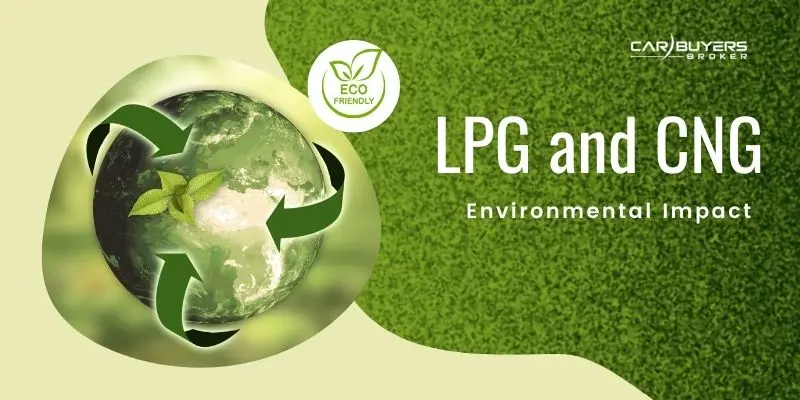Difference Between CNG And LPG Uncovered
The quest for cleaner, sustainable fuel options is on the rise. Compressed Natural Gas (CNG) and Liquefied Petroleum Gas (LPG) are significant players in this field. Both offer unique benefits and have become famous for those seeking greener alternatives to traditional fuels.

Properties of CNG and LPG
CNG and LPG, while both being gaseous fuels, have distinct properties. CNG, primarily composed of methane, is lighter than air. This allows it to disperse quickly when released, reducing the risk of ignition. On the other hand, LPG, a blend of propane and butane, is heavier than air, causing it to pool in low areas when leaked.
These properties also affect their combustion rates and energy outputs. CNG burns at a slower rate, providing a more controlled combustion process. With its higher calorific value, LPG generates more heat energy per unit volume.
Availability of CNG and LPG
The availability of CNG and LPG largely depends on the infrastructure and demand in a particular region. As a natural gas product, CNG is often available in areas with established natural gas distribution networks. However, it requires specific refueling stations due to its high-pressure storage requirements.
However, LPG is more readily available and can be found at most fuel retail outlets. It can be stored and transported in pressurized tanks, making it a more flexible option in areas lacking natural gas infrastructure.
Autogas (LPG) – Buy LPG Car In Germany
Let us help you purchase that eco-friendly and fuel-efficient car built in Germany. Our car-buying service simplifies this process, assisting with vehicle selection, paperwork, and logistics. We ensure a seamless experience, whether you’re a local buyer or importing the vehicle. In just three easy steps, you can make your request below:
Click Here To Explore More!
LPG or CNG Cost Analysis
The cost of CNG and LPG can vary significantly based on several factors. CNG, a direct byproduct of natural gas processing, often has a lower cost per unit of energy. However, the initial setup costs for CNG vehicles and refueling infrastructure can be high.
LPG, while typically more expensive per unit of energy than CNG, has lower setup costs. This is due to its widespread availability and the relative ease of installing LPG storage and dispensing systems.
Market conditions, taxes, subsidies, and other factors also play a significant role in the final consumer price of these fuels.
However, if you buy them in Nigeria, check this National Bureau Of Statistics (NBS) report.
Safety Considerations
Safety is a crucial factor when dealing with fuels like CNG and LPG. Being lighter than air, CNG disperses quickly when leaked, reducing the risk of ignition. However, its high-pressure storage requirements necessitate specific safety measures during handling and storage.
LPG, being heavier than air, can accumulate in low-lying areas when leaked, increasing the risk of ignition. Therefore, proper ventilation and leak detection systems are essential when using LPG.
Both fuels require careful handling and maintenance to ensure safety. Always follow the manufacturer’s guidelines and local regulations when using these fuels.
Environmental Impact
The environmental impact of CNG and LPG is significantly less than that of traditional fuels. CNG produces fewer emissions and greenhouse gases, making it a cleaner option. It also emits less carbon monoxide, sulfur dioxide, and particulate matter.

While cleaner than gasoline and diesel, LPG has a higher carbon content than CNG. This results in higher carbon dioxide emissions. However, advancements in technology and fuel quality can help mitigate these effects.
CNG and LPG are crucial in reducing our carbon footprint and moving towards more sustainable energy sources.
Future Trends
The future of CNG and LPG is promising, with both fuels expected to play a significant role in the energy mix. The demand for CNG and LPG is projected to increase due to their lower environmental impact and cost-effectiveness.
According To The Mordor Intelligence Report,
The Africa, CNG, and LPG Vehicle Market is projected to grow from USD 1.28 billion in 2024 to USD 1.9 billion by 2029, at a CAGR of 6.78%. This growth is driven by increasing environmental concerns, reducing dependence on traditional fossil fuels, and government policies promoting cleaner energy sources. While adoption is still modest compared to other regions, there’s growing interest and investment in these alternative fuel technologies. Market size varies across different countries, with some experiencing faster growth due to supportive regulatory frameworks and infrastructure development.
Innovation in storage and distribution technologies will likely make these fuels more accessible. Regulatory changes promoting cleaner fuels could also boost their adoption.
However, the trends will depend on various factors, including technological advancements, market dynamics, and policy decisions.
Conclusion
In conclusion, CNG and LPG differ in their properties, availability, cost, safety considerations, environmental impact, and future trends. Both fuels offer unique advantages and have become viable alternatives to traditional fuels.
As we move towards a more sustainable future, the role of CNG and LPG is expected to grow. Understanding the differences between these two fuels can help consumers make informed decisions about their energy use.
